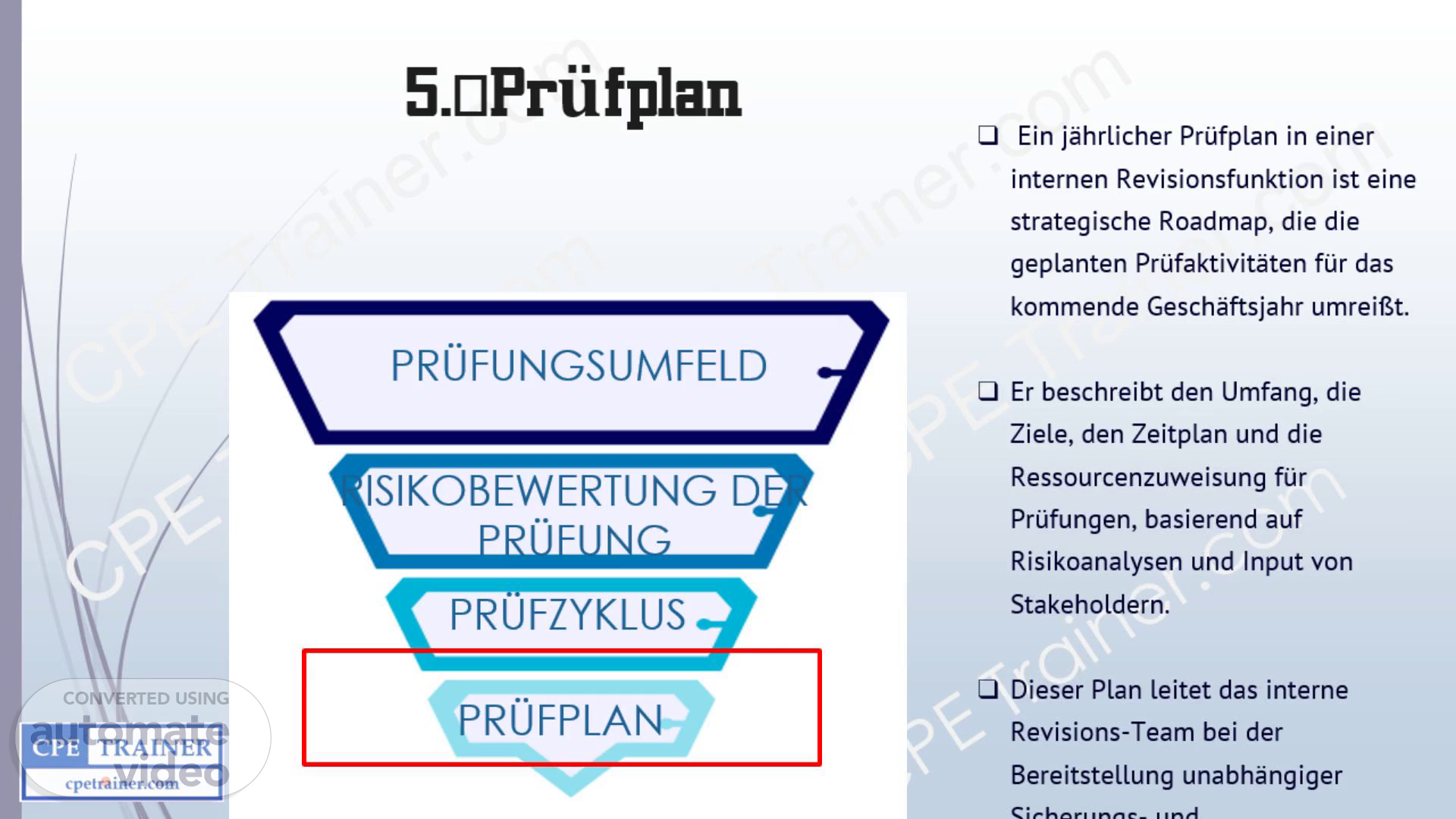Scene 1 (0s)
[Audio] Welcome to the first slide of our eCommerce training video. Today, we will be discussing the significance of having an audit plan for the internal audit function. This plan serves as a strategic roadmap that guides the entire audit process. It is not simply a schedule of audits, but a well-thought-out plan that determines what will be audited, why it is important, and how resources will be allocated throughout the year. The audit plan is created using a risk-based approach, prioritizing the areas that pose the greatest potential impact to the organization. This ensures that our work provides value, supports decision-making, and strengthens governance and risk management processes. By identifying and addressing these high-risk areas, we can better safeguard the organization and its stakeholders. The audit plan is also an important tool for communication and collaboration. By including key stakeholders in the development of the plan, we can gather valuable input and insights. This ensures that the plan is aligned with the organization's goals and objectives, while also addressing any concerns or focus areas from stakeholders. In summary, the audit plan is essential for the success and effectiveness of the internal audit function. It serves as a strategic roadmap, prioritizing high-risk areas and involving stakeholders in the planning process. This ultimately provides value, supports decision-making, and strengthens governance and risk management processes. Thank you for listening to our overview of the audit plan. We will now proceed to the next slide of our presentation..
Scene 2 (1m 43s)
[Audio] Slide 2: The second slide of our presentation discusses the key components of a successful audit plan. Together, these elements create a strategic roadmap for the internal audit team, guiding them in providing independent assurance and consulting services to the organization throughout the year. The first element is the scope, which identifies the specific processes, units, or risks to be examined during the audit. This is crucial in directing resources and efforts towards the most important areas for the organization. Next, we have the objectives, which outline the goals and objectives for the audit, such as compliance, operational efficiency, and asset protection. Clearly defined objectives help keep the audit on track and ensure it meets the organization's needs. The third element is the timeline, which sets out the schedule for each audit engagement, ensuring a smooth and timely process to provide assurance to the organization. This is crucial in managing the audit and avoiding delays. Lastly, we have resource allocation, where auditors with the necessary skills are assigned to different audit assignments. By matching auditors with the appropriate expertise, the audit process becomes more efficient and effective. Together, these elements form a practical and actionable plan that acts as a roadmap for the internal audit team. It is developed through risk analysis and stakeholder input and is regularly evaluated and adjusted to ensure it meets the organization's needs and enhances governance and risk management processes..
Scene 3 (3m 26s)
[Audio] Welcome to the final slide of our presentation. We have reached the culmination of our discussion on the significance of an audit plan for an organization's internal audit function. As we have discovered, creating a comprehensive audit plan is a structured process that acts as a strategic roadmap for the internal audit function. It all begins with a risk assessment, where we identify and assess the risks faced by the organization. This step is crucial in gaining an understanding of the potential vulnerabilities and areas of concern within the organization. After identifying the risks, we then align them with the audit cycle, which determines the frequency of audits for each area based on its risk level. This approach allows for a more targeted use of resources, with a focus on high-risk areas. Additionally, resource availability is a key consideration when developing the audit plan. It is imperative to ensure that the audit team has the necessary time, expertise, and tools to effectively carry out the plan. By integrating these steps, the audit plan becomes more than just a compliance exercise. It becomes a proactive tool that enhances the organization's governance and risk management processes. Not only does it identify potential weaknesses, but it also provides a roadmap for addressing them. In conclusion, the development of a comprehensive internal audit plan is crucial for organizations seeking to improve their resilience and effectiveness. Thank you for your attention, and we hope that this presentation has provided valuable insights into the importance of an audit plan. Have a great day!.
